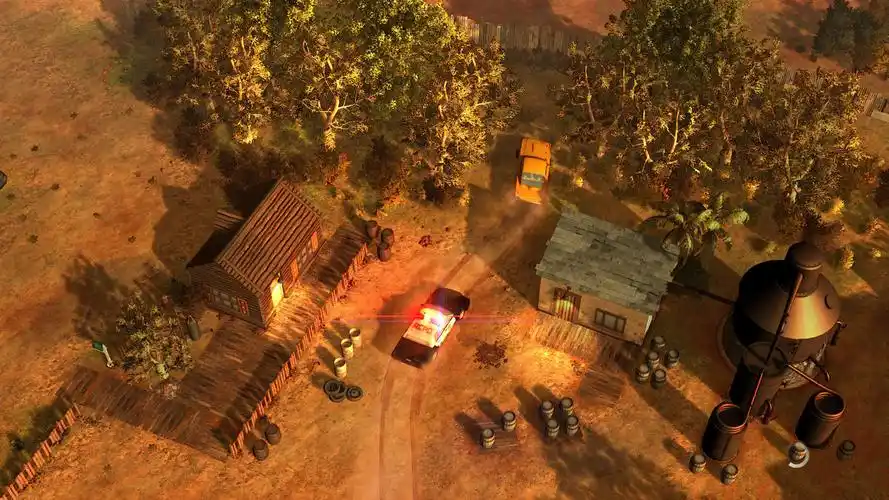Title: Beyond the Tape: How the 'Containment Zone Sign Installer Simulator VR' Place Missions Expansion Redefines Immersive Storytelling
The virtual reality landscape is often dominated by the spectacular: high-octane shooters, fantastical adventures, and pulse-pounding horror experiences. Yet, some of the most profound and memorable moments in VR come from the opposite end of the spectrum—from the mundane, the methodical, and the quietly atmospheric. The original Containment Zone Sign Installer Simulator VR carved out a unique niche by mastering this very premise. It wasn't about escaping a bio-hazardous quarantine zone; it was about being the person who methodically seals it shut. Its genius lay in the chilling dissonance between its sterile, bureaucratic title and the deeply unsettling, environmental narrative it conveyed. Now, with the 'Place Missions' Expansion, the developers haven't just added new levels; they have fundamentally evolved the game from a compelling simulator into a groundbreaking work of immersive historical and emotional archaeology.
The core gameplay loop remains deceptively simple. Armed with a government-issued mandate, a rivet gun, stacks of ominous yellow-and-black warning placards, and heavy-duty hazard tape, players are tasked with securing locations breached by an unspecified biological catastrophe. The original game focused on public spaces—subway stations, hospital wings, office lobbies. The Place Missions expansion, however, shifts the focus inward, to the most intimate spaces of all: private residences. This shift in venue is the expansion's masterstroke, transforming the act of containment from a public safety procedure into a deeply personal, and often heartbreaking, violation.
A mission might begin in the silent, sun-dappled living room of a suburban home. The order is clear: secure all points of entry and exit. But to do your job, you must first intrude. You are an archaeologist of a life interrupted. The VR interface—grabbing, pulling, riveting—feels heavier here. Placing a "CONTAMINATION - NO ENTRY" sign over a family's front door is one thing; sealing shut the bedroom door of a child, whose toys are still scattered across the floor, is another entirely. The expansion brilliantly introduces new "Place" objectives that go beyond simple signage. You are now sometimes instructed to "Place" specific items found within the quarantine manifest.
You might be ordered to locate and bag a specific medication from a bathroom cabinet, hinting at a victim's illness. Another mission requires you to find and secure a cherished family photograph left on a kitchen table, a task that forces you to examine the faces of those you are effectively writing off. In one particularly powerful scenario, your work order includes "Placing" a sealed letter from a authorities on a mantelpiece, a cold, official farewell where a personal one was impossible. These are not just fetch quests; they are narrative rituals. Each item placed is a piece of evidence in a story you are actively piecing together, and your hand (via the VR controller) is the instrument that catalogs the tragedy.
The environmental storytelling, already a strength of the base game, reaches unparalleled heights. There are no jump scares, no monsters lurking in closets. The horror is existential. It’s in the half-eaten bowl of cereal on the counter, the news broadcast frozen on a TV screen, the frantic, scribbled notes by a telephone. The sound design is a symphony of unsettling quiet, broken only by the drone of a distant decontamination team, the crinkle of your hazmat suit, and the jarring, percussive thwack-thwack-thwack of your rivet gun echoing through a silent hallway. This sonic landscape makes every action feel deafeningly loud and profoundly disrespectful.
The Place Missions expansion also introduces a subtle but brilliant psychological mechanic: the "Empathy Delay." After spending more than a few minutes in a particularly poignant location, your character's breathing (heard through the helmet audio) becomes slightly more labored. Your vision might blur at the edges for a second if you linger too long on a personal artifact. The game doesn't punish you; it mirrors you. It suggests that the weight of what you are witnessing is having a tangible effect, breaking through the clinical detachment your role requires. This transforms the player from a passive observer into an emotionally complicit participant.

Ultimately, this expansion is a triumph of VR as a narrative medium. It proves that true immersion isn't just about visual fidelity but about emotional weight and tactile consequence. Containment Zone Sign Installer Simulator VR: Place Missions is more than a game; it is a somber, interactive memorial. It forces players to contemplate the human cost of catastrophe not through statistics on a screen, but through the intimate, heartbreaking act of sealing away a life, one rivet at a time. It’s a haunting, essential experience that lingers long after the headset is taken off, challenging the very definition of what a video game can be.
Tags: #VRGaming #ImmersiveSim #IndieGame #SimulatorGame #VRNarrative #EnvironmentalStorytelling #GamingInnovation #ContainmentZoneSimulator #EmotionalGaming #VirtualReality
















